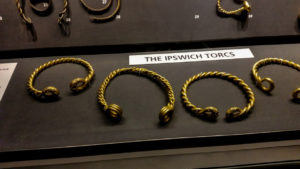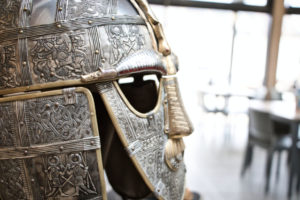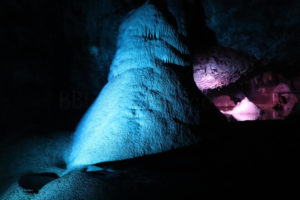 Newcastle Castle is a medieval fortification in Newcastle upon Tyne, England, built on the site of the fortress that gave the City of Newcastle its name. The most prominent remaining structures on the site are the Castle Keep, the castle’s main fortified stone tower, and the Black Gate, its fortified gatehouse.
Newcastle Castle is a medieval fortification in Newcastle upon Tyne, England, built on the site of the fortress that gave the City of Newcastle its name. The most prominent remaining structures on the site are the Castle Keep, the castle’s main fortified stone tower, and the Black Gate, its fortified gatehouse.
Use of the site for defensive purposes dates from Roman times, when it housed a fort and settlement called Pons Aelius (meaning ‘bridge of Hadrian’), guarding a bridge over the River Tyne. Robert Curthose, eldest son of William the Conqueror, in 1080 built a wooden motte and bailey style castle on the site of the Roman fort. Curthose built this ‘New Castle upon Tyne’ after he returned south from a campaign against Malcolm III of Scotland. Henry II built the stone Castle Keep between 1172 and 1177 on the site of Curthose’s castle. Henry III added the Black Gate between 1247 and 1250. Nothing remains of the Roman fort or the original motte and bailey castle.
In the mid-2nd century, the Romans built the first bridge to cross the River Tyne at the place where Newcastle now stands. The bridge was called Pons Aelius or ‘Bridge of Aelius’, Aelius being the family name of Emperor Hadrian, who instigated the building of Hadrian’s Wall along the Tyne-Solway Gap. The Romans built a fort to protect the river crossing which was at the foot of the Tyne Gorge. The fort was situated on a rocky outcrop overlooking the new bridge.
At some unknown time in the Anglo-Saxon age, the site of Newcastle came to be known as Monkchester. In the late 7th century, a cemetery was established on the site of the Roman fort.
In 1080, the Norman king, William I, sent his eldest son, Robert Curthose, north to defend the kingdom against the Scots. After his campaign, he moved to Monkchester and began the building of a ‘New Castle’. This was of the “motte-and-bailey” type of construction, a wooden tower on top of an earthen mound (motte), surrounded by a moat and wooden stockade (bailey).
In 1095, Robert de Mowbray, Earl of Northumbria, rose up against William Rufus and Rufus sent an army north to crush the revolt and to capture the castle. From then on the castle became crown property and was an important base from which the king could control the northern barons.
Not a trace of the tower or mound of the motte and bailey castle remains now. Henry II replaced it with a rectangular stone keep, which was built between 1172 and 1177. A stone bailey, in the form of a triangle, replaced the previous wooden one. The master mason or architect, Maurice, also built Dover Castle. The great outer gateway to the castle, called ‘the Black Gate’, was built later, between 1247 and 1250, in the reign of Henry III. During the civil wars at the end of King John’s reign, it was under the control of Philip of Oldcoates.
Additional protection to the castle was provided late in the 13th century when stone walls were constructed, with towers, to enclose the town. The safety provided by the town walls led to the neglect of the fabric of the castle. In 1589, during the reign of Queen Elizabeth I the castle was described as being ruinous.







